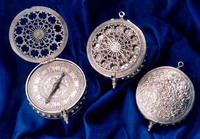Login form
Time
 People say that time flies. They ask where the time went. They say that time marches on. You look at a clock or your watch to tell time. Do you ever wonder what time is?
People say that time flies. They ask where the time went. They say that time marches on. You look at a clock or your watch to tell time. Do you ever wonder what time is?
Time isn’t something you can see or touch. You can only tell that time passes because other things change. Change, such as how tall you are, tells you that there is a past, present, and future.
WHAT IS PAST, PRESENT, AND FUTURE?
Time that is past happened already. You know when your summer vacation is over. The time of last summer’s vacation is past.
Time that is present is happening right now. As you are sitting reading this, you are in the present.
The future is time that has not happened yet. You know when you are looking forward to your birthday. That time is in the future.
KEEPING TRACK OF TIME
In ancient times, people used the rising and setting of the Sun to tell time. They needed to know when it would be light and when it would be dark. The Sun looks as if it goes across the sky, but that’s because Earth is turning. The Sun stays still. When the Sun rises, it is daytime. When the Sun sets, it is nighttime. When the Sun is at its highest point in the sky, it is noon, halfway through the day.
People also used the seasons to tell time long ago. They knew that there was winter and summer. They needed to know when to plant crops and when to gather food for the winter.
People also studied how the Sun moved across the sky. They used the Sun to tell when summer began. They called the time it takes to go from one summer to another a year. They counted up the number of days that made up a year and came up with numbers close to 365.
Ancient people also saw that the Moon seems to change shape in a cycle that lasts 29 days. They called this time a month.
HOW DID PEOPLE LEARN TO TELL TIME?
Ancient Babylonians in the Middle East may have been the first people to divide a day into 24 hours. They invented the sundial around 2000 bc to tell the passing of the hours during daylight. A sundial is a disk with a triangle-shaped piece sticking up in the middle. The triangle casts a shadow that moves around the sundial’s disk as the Sun moves across the sky. The Babylonians put markings on the disk to show where the shadow would be each hour.
People also used hourglasses to tell time. An hourglass has two containers with a narrow connection between them. They watched how long it took for water or sand to pour from one container to another.
People learned to divide hours into minutes. There are 60 minutes in an hour. Eventually, they divided minutes into seconds. There are 60 seconds in 1 minute.
WHO INVENTED CLOCKS?
The Chinese may have invented the first ticking clock about 1,000 years ago. Europeans had clocks about 800 years ago. Over time, the clocks got better. They kept time more accurately. Clocks also got smaller. Watches are small clocks you can wear on your wrist.
After electricity was discovered, inventors learned how to make electric clocks. They learned how to make watches that use batteries.
IS TIME THE SAME ALL OVER EARTH?
Hours, minutes, and seconds are the same amount of time anywhere on Earth. But Earth is divided into 24 time zones. The time zones look like slices on a beach ball. There is a one-hour difference between each time zone and the one next to it. In the time zone east of the one you live in, it is one hour later. In the time zone to the west, it is one hour earlier.
The main time zones in the United States are called the Eastern, Central, Mountain, and Pacific time zones. The main time zones in Canada are the Newfoundland, Atlantic, Eastern, Central, Mountain, and Pacific time zones.
Source: Microsoft ® Encarta

